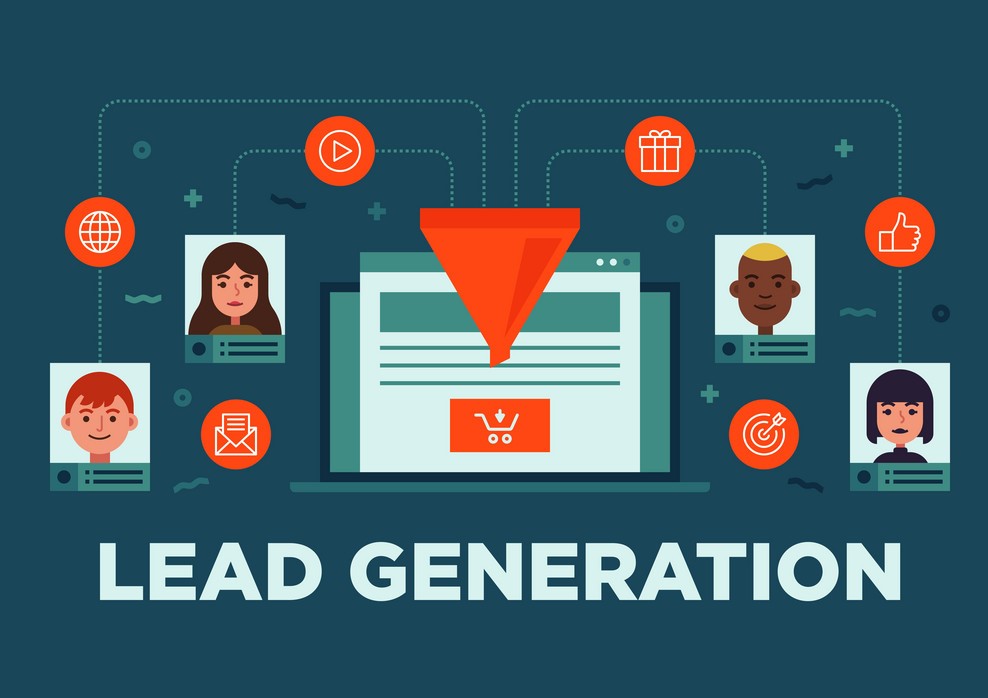Imagine you’re standing in the middle of a desert and don’t know where to find water. You have to search and dig around until you find it. Now you’ve got a sense of what sales is like without any prospecting strategy.
Prospecting is one of the most important parts of any salesperson’s job. It’s what helps you build relationships with new customers. It can ultimately mean the difference between whether your revenue is up or down this quarter.
Moreover, the best prospecting techniques help you connect with the right people at the right time to generate more leads for your sales pipeline.
In this growing sales landscape, we’ll explain what is prospecting in sales and why it’s vital for business growth and success. We’ll also share expert tips for successful prospecting that help you reach more potential customers and close more deals.
What Is Prospecting?
When you’re in sales, it’s vital to find customers who need your product or service – people who will buy from you, not your competitors. This process of finding potential customers or buyers for your products or services is called “prospecting” or “sales prospecting”.
Sales Prospecting can be done in many ways and through different channels, including:
- Cold calling/emailing out of the blue to companies you don’t know at all.
- Direct mail campaigns to businesses based on data or other public sources.
- Online Advertising (including Google AdWords) to specific audiences that fit your business model or product offering.
Prospecting in marketing includes activities like social media marketing, pay-per-click ads, content marketing, or newsletter.
Who is a prospect?
A prospect is a potential customer that has been identified by your sales team as a person or company with the ability to buy goods or services from your organization. A prospect becomes qualified when they meet certain criteria outlined in your company’s ideal customer profile.
For example, if you provide database services to B2B companies, your prospect is the top management or decision-makers in those companies who can make the purchasing decision.
Difference Between Sales Prospect & Marketing Prospect
A marketing prospect is someone who has demonstrated some measure of interest in your product or service, but they are not ready to buy at this point in time. They may need more information, or they may need to see how you deliver on your promises before making a purchase decision.
On the other hand, sales prospects are ready to buy now. They have already done the research and know how they will use your products or services. They just need to talk with you about specifics and negotiate pricing.
Before moving further, we would like to tell you that there is a bit difference between the lead and prospect. A lead is an individual who admires your product. But, a prospect is someone who can afford the product.
For example, a school student interested in your product. He appreciates your product on your every social media handle but cannot buy it for the next few years. This is a lead.
On the other side, the father of that student who also likes your product and earns a decent income to purchase it for his son will be a prospect for you if he has already talked to your sales team.
Sales Prospecting
Sales prospecting is the process of identifying potential prospects and reaching out to them to determine their level of interest in your product or service. It is done by your inside sales team and/or your field sales team, depending on the type of business you have.
Sales Prospecting Process
The process of sales prospecting includes the following phases:
(1) Research
The first step in sales prospecting is research — knowing where the best prospects can be found and how much they’re worth to your company. This information will help you decide which prospects are worth pursuing and how much time and money to invest in each one. This will also let you know the quality of the prospect.
You can evaluate the prospect by using preset qualifying dimensions and keeping track of them through a CRM.
(2) Outreach
Once you know where your best prospects are, it’s time to reach out and connect with them in person or over email/phone/social media/etc. Start by inviting them to an upcoming event (if relevant), then follow up with more information about why this event would be valuable for them.
You will come across the gatekeeper at this stage who guards the way to a decision-maker.
(3) Discovery Call
Once you’ve reached a gatekeeper and identified prospects who seem interested in what you offer, schedule a time for an in-person discovery call. Ask them the right questions during the discovery call so that you can learn more about their needs and goals.
(4) Educate and Evaluate
After a discovery call, evaluate the needs of the prospect. It is really important to evaluate as this will tell you how much the prospect needs the product. You will come to know about the pain points of your prospects and their objections while making a purchasing decision.
(5) Close
As you got all the information you need about your prospects, turn them into paying customers by pitching them the value you are offering. This will result in one of two outcomes: Closed-won or Closed-lost.
Why is sales prospecting important?
Sales prospecting is the key to success in sales. It helps to generate leads, build a relationship with your prospects, learn about their needs and wants, and build a healthy pipeline.
In fact, it is a step in the sales process where sales representatives contact potential clients to initiate the buying process. Essentially, it takes place when there’s no solid lead for a sales representative to follow up on.
The goal of prospecting is to build a relationship with prospective clients and open communication in order to have those clients refer prospects who can progress through the sales cycle.
How To Prospect For Sales?
Here are some tactics that will help you succeed at sales prospecting:
(1) Research your prospect and their business
You have to research your prospect and their business before reaching out to them. Research helps you understand their needs and how they might benefit from your product or service. This makes it easier for you to build rapport with them and turn them into a customer.
(2) Prioritize your prospects based on the possibility of purchasing your product
When you are developing your pipeline, it is important to prioritize your prospects based on the probability that they will purchase from you. You can use a lead scoring method that assigns points based on various criteria. This allows you to focus more time on developing relationships with those who may become customers sooner than others who may not be ready.
(3) Make a personalized pitch for each prospect
Don’t send out one generic letter or email blast to everyone on your list. Instead, customize each message so it feels personal and relevant to each individual person on your list. It will pay off in terms of response rates and conversions down the line.
(4) Review your prospecting process to see what you can improve you can improve
Do not forget to evaluate which activities generated prospects during the prospecting and which wasted time. Maybe there’s something unnecessary in your process that takes up too much time or doesn’t yield enough qualified leads. So, always ensure that you’re spending time on activities that will bring in results, and review your prospecting process regularly.
Sales Prospecting Techniques
Now, let’s explore some techniques from the sales desk for qualifying prospects and winning more sales.
Do your research properly
Research all aspects of your market and industry, including the demographics of your target audience, the best channels for reaching them, their pain points, and how those can be solved by using your product or service. You should also have a good understanding of their buying process and their decision-making process.
Set an Ideal Customer Profile (ICP)
Once you have the required information, use it to create an ICP that includes all the information about who would be most likely to buy from you and why they would want to do so. Your ideal customer profile is your vision of the ideal prospect for your business. It helps you stay focused on the right people in order to find more customers who fit this description and are interested in buying from you now or in the future.
Understand the Company’s Internal Structure
Understand the internal structure of the company that you want to sell your products or services. This will help you determine who are the right people to talk to in order to get the business. You need to find out who are their decision-makers, who are influencers, and who has authority over budget allocation.
For example, if you’re selling software as a service (SaaS), then you want to find out whether prospects are IT managers or information technology directors. This will help determine what level of budget they have and whether they care about cost versus performance and features.
Set your goals before reaching out
You should set clear goals with respect to sales before reaching out. You should know what exactly you want from these meetings? Do you want them as customers or just leads? What is it that makes them qualified enough for you? All such factors should be taken into consideration before reaching out to anyone for any kind of meeting or discussion.
Identify prospects’ pain points
A prospect has a problem that can be solved by your product or service. If you understand their pain point, then you can sell them why they need to buy your product or service to solve it. Use the following techniques to uncover their pain points:
- Ask open-ended questions like “What do you want?” This will help you understand what they want from your product or service and whether it will actually solve their problems.
- Ask questions about their business goals such as “What do you want to accomplish with this product/service?” This will help you understand how your product or service will help them achieve their goals.
For example, if you are selling cloud-based accounting software, you need to find out what kind of problems your prospect has with his/her current accounting system. You can also ask about their previous experience with accounting software and what were their major concerns.
Use sale triggers
A sale trigger is something that causes a prospect to make a purchase decision, such as a purchase offer or other incentive (like an exclusive discount). Use the kind of triggers to increase your conversion rate by using them at key points in your sales process. The higher number of triggers you use during the sales process, the greater chance of closing the deal.
For example, if you are selling a cloud-based accounting software and want to sell it to small businesses, a possible sales trigger can be:
If your prospect is struggling with cash flow management, show him how the new accounting software will help him monitor cash flow in real-time (and thus reduce stress).
Create a Personal Brand
Your personal brand is what your business is all about. It’s how you want to be seen by the world and how you want to be remembered. So, make sure it’s something that inspires people to buy and get involved with your business.
This can be accomplished by taking control of your brand story and telling it consistently across all channels (social media, website, email marketing) so people know exactly who you are and what value you provide before they ever even meet you in person.
Keep assessing your results
Sales reps are always looking for ways to improve their skills so that they can achieve better results. And in order to do this, they need to assess their current performance level and set goals for improvement.
Expert Tips For Targeted Prospecting
Here are some tips from the sales experts for the targeted prospecting.
Start Small
It’s important to start small and build your pipeline from there. You don’t want to overwhelm yourself by trying to reach out to hundreds of prospects at once. Start with a manageable number and work your way up from there. If you’re just starting out, try targeting 10-20 companies that are similar in size to your current customers.
Understand when to stop following prospects
If someone has not responded after two weeks (or whatever time frame you set), it’s time to move on. They either aren’t interested or they aren’t available at this time — either way, there’s no point in continuing to follow up with them if they aren’t interested in what you have to offer right now.
Update ICP
Keep your ICP up-to-date and accurate. If you’re going to use it as a tool for prospecting, you need to make sure that the information is current.
Plan your calls
Plan your calls beforehand so that you don’t end up wasting time on unqualified prospects or those who are not interested in your product/service.
It would be good if you send them information about your company beforehand so that when you call, they already have some idea about what you do and can easily make up their mind whether they would like to proceed further or not.
Wrapping Up
In the end, sales prospecting is an art. You must have a good understanding of your products, company, and market. Research your competition and understand what makes your products or services unique. Prospective customers want to know how you can help them solve their problems.
Still, having a hard time with your prospect research?
There’s an easier way to find business contact information.
Try Mr. E by EasyLeadz, the B2B contact data provider.
Prospecting
Sale Prospect
Sales Prospecting
Sales Prospecting Techniques
Sales Prospecting Tips


